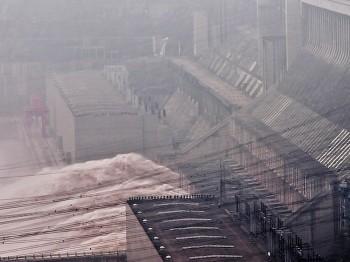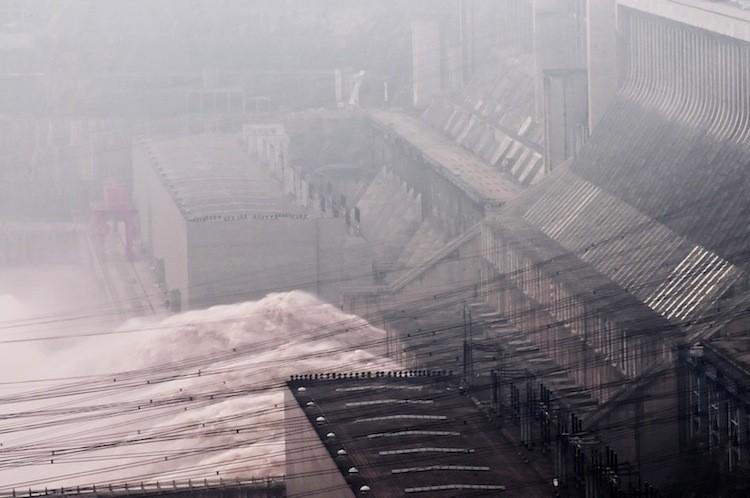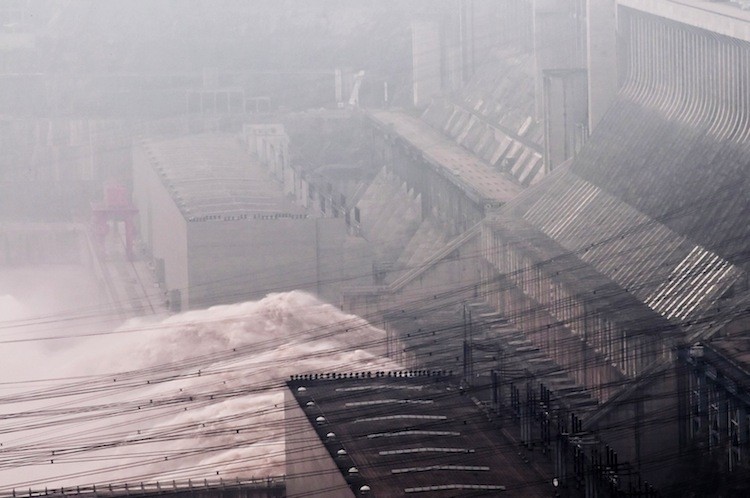The massive 17-year project on the Yangtze River that has submerged many communities and displaced at least 1.4 million people, was to control and harness China’s mightiest river, and stand as a symbol of the Chinese Communist Party’s (CCP) greatness and power over nature.
But since the dam’s completion in 2006, nature has not cooperated. Drought and “every kind of disaster,” to quote one local official, have descended upon the region.
The dam project has also become a financial sinkhole, requiring hundreds of billions yuan in ongoing damage control.
Drought
Extreme weather has been the norm along the Yangtze River since the Three Gorges Dam project was completed and started collecting water in 2006. Ever-worsening droughts have been hitting southwestern China and the downstream Yangtze region year after year since then.
In 2006, the lowest water levels in 130 years were registered near Chongqing. It was even worse in 2007. In 2008, the dry season began one month earlier. And the 2009 drought extended all the way into 2010.
This year, a drought not seen in 50 years is scourging provinces in the downstream Yangtze River region. The river is withering. At the same time, to generate electricity, the dam is holding back water, leaving little for the lower reaches of the river. Drinking water for tens of millions of people and livestock is threatened. Rice crops are failing. Some areas were also hit by electricity shortages.
Before the Three Gorges Dam was built, snow melting at the source of the Yangtze created big annual floodwaters in the upper reaches of the river. Now the floods are not as plentiful, and even if there’s water in the upriver, the dam cuts off the water flow to the lower reaches, a Yangtze River Waterway Bureau official by the surname Zhang, told The Epoch Times.
The dam project that was hailed by the CCP as being able to secure the region’s top needs--power generation, inland shipping, flood control and agricultural irrigation--has failed.
On May 18 the regime’s State Council issued a “Three Gorges Dam Post Construction Plan,” admitting for the first time that problems exist, saying there is an urgent need for geological and environmental disaster prevention, and issues with the settlement of evacuees, among others.
Water authorities have increased water discharge at the dam since May 20 to somewhat mitigate the drought in downstream river regions.
But Wang Hai, an official of China Three Gorges Corporation, told state media on May 26 that four fifths of the reservoir’s regulation capacity has now been consumed. If there isn’t more water coming down from the upper reaches of the Yangtze by June 10, the Three Gorges Dam will very likely stop discharging water even if no rain has fallen in the downstream areas by then, Wang said.
The reason no more water would be released to the drought stricken areas, is that it would cut into the profits of the corporation in charge of generating electricity from the dam.
An official at the Ministry of Water Resources told The Epoch Times that discharging water from Three Gorges Dam affects the power generation for the China Three Gorges Corporation. The main purpose for the Three Gorges Dam Project is electricity generation. Therefore the water that flows into the Three Gorges Dam is money, he said.
Geological Disasters
What early critics of the dam project have predicted and warned of is now coming about. Many geological disasters have befallen the provinces along the lower Yangtze.
During last year’s rainy season the Yangtze region was hit by a flash flood. Authorities said the dam was threatened and discharged additional water to save the dam. Thus the downstream flooding was made worse and almost turned into a national disaster.
Opening the dam’s flood gates during flood season and storing water during dry season has become an emergency type regulation that is called “reverse regulation.” Water experts in Hunan Province have been strongly objecting to the Three Gorges Dam authorities’ use of reverse regulation because it worsens natural disasters.
“Before completely solving some old remaining issues, new geological disasters followed,” an official of the Chongqing Committee of Chinese People’s Political Consultative Conference told Time Weekly.
Officials in Jiangxi Province complained to the central government, saying that the 2010 drying up of Poyang Lake, China’s largest freshwater lake, was directly related to the Three Gorges Dam’s reverse regulation.
Since 2008, 243 geological disasters have occurred in the dam’s Chongqing section alone, causing a total landslide volume of about 165 million cubic meters.
“We have become a live museum of geological disasters,” Cheng Gongxun, an official of Fengjie County told Time Weekly.
“Every kind of geological disaster imaginable, including mud and rock flows, landslides, and collapses of river banks, have been seen in Fengjie,” Cheng said.
Read More...Cost of Damage Control
Cost of Damage Control
Problems brought about by the Three Gorges project have become reasons for Three Gorges officials to ask for money from the central government. To solve evacuee relocation issues and geological disasters during the so-called post Three Gorges period, 170 billion yuan (US$26 billion) were allocated in 2009, about the same amount as the cost of building the dam.
The main purpose of the regime’s May 18 “Three Gorges Dam Post Construction Plan” was to resolve the remaining issues of the Three Gorges project. An official who participated in compiling the plan said, “The total amount of money requested from all areas to resolve remaining issues exceeds 400 billion yuan (US$61.6 billion),” the Time Weekly article said.
In 2000, Professor Zhang Guangdou from the Department of Hydraulic Engineering at Tsinghua University estimated that 300 billion yuan (US$46 billion) would be needed just for water pollution control of the Three Gorges Dam.
In 2007, China Three Gorges Corporation announced that 382 million yuan (US$59 billion) will be allocated for establishing protected areas for rare fish species.
Corruption
Some experts and scientists have long predicted that the Three Gorges project would be a “fishing” [for money] project: the initial figure submitted was small, but more money would be demanded continuously and endlessly.
Wang Weiluo, a Chinese hydraulics expert who now works in Germany, said a big project like this is a heaven for corrupt Chinese officials. Seventy billion yuan (US$10.8 billion) was allocated for the resettlement of evacuees, however each settler received only 5,000 to 8,000 yuan (US$770 - 1,232). The numbers don’t add up, Wang said.
“Where have the resettlement funds gone? This will forever remain a secret,” Wang said.
Ecologist Hou Xueyu, who refused to sign an evaluation report of the Three Gorges Project 1988, said: “After the dam is built ... soil erosion and impoverishment will escalate; loss of soil and water will intensify; landslides, drought and flood disasters will ever-increase.”
Hou also estimated that resettlement would involve more than 113 million people.
Dismantle the Dam?
At present, many discussions critical of the Three Gorges Dam are surfacing in Chinese media and on websites.
On May 25, the regime’s mouthpiece People’s Daily even published an article titled: “Post Three Gorges Challenges – Dismantle the Three Gorges Dam?”
Many Chinese websites have republished articles written by the late well-known hydraulic expert Huang Wanli of Tsinghua University, who once told the Chinese regime, “The Three Gorges Dam, if built, will eventually have to be blown up.”
Wang Weiluo shares Huang’s assessment. In a recent article titled, “Dismantling the Three Gorges Dam should be done sooner; later on it won’t be achievable,” Wang said: “If authorities cannot make up their mind to dismantle the Three Gorges Dam now, the negative impact will be even greater in the future, and more money will be required.”
“When silt accumulation [in the reservoir] exceeds four billion tons, the Yangtze River will no longer be able to carry that much silt into the sea, and the middle and lower Yangtze River will be blocked, forcing the river to change its course. Once this occurs, demolishing the Three Gorges Dam won’t be achievable even if the authorities want to,” Wang said.
[email protected]







Friends Read Free